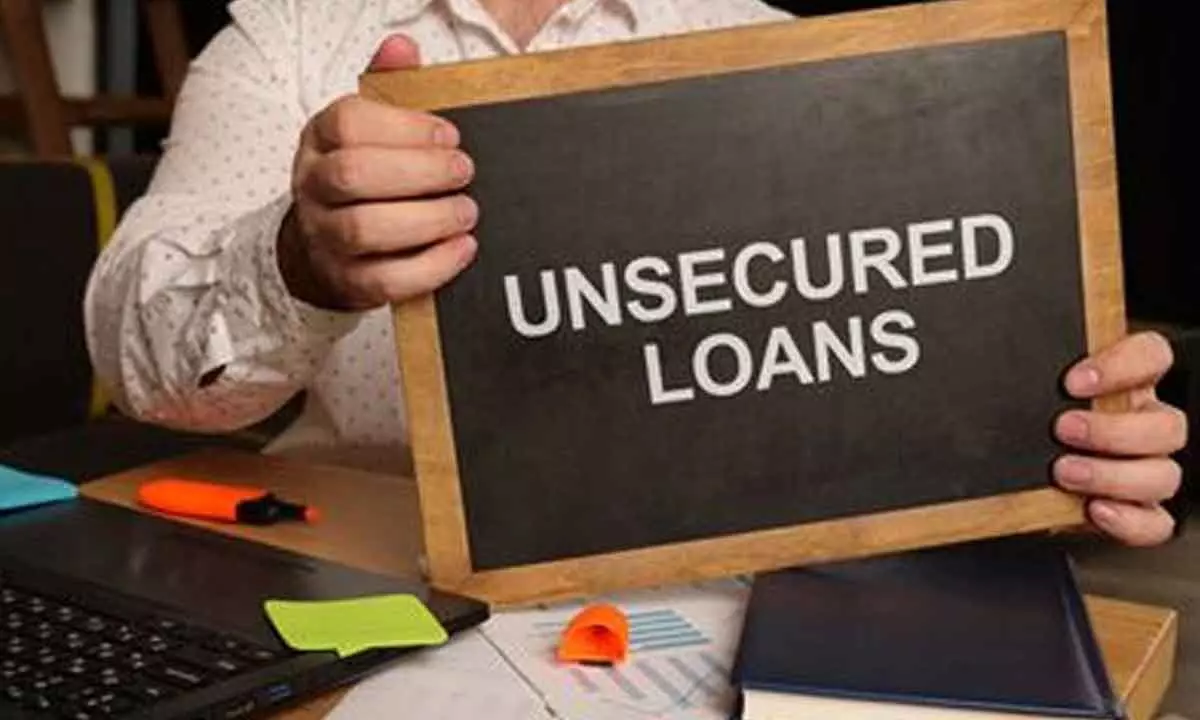Unsecured loans causing anxiety
These loans are almost always in the Retail segment, granted to individuals, and have the potential to become NPAs in a short time in the event of default
image for illustrative purpose

The RBI has expressed concern recently over the buildup of unsecured loans in the books of banks and NBFCs. These loans are almost always in the Retail segment, granted to individuals, and have the potential to become NPAs in a short time in the event of default, owing to the absence of any collateral security. This potential could become a reality in a situation which exists at present of rising household indebtedness levels and falling household savings.
The data does support the concerns of RBI: unsecured loans of banks increased by 25.2 per cent in the year ended March 2023, as compared to 22.9 per cent in 2021, while for NBFCs, data compiled by a rating agency, India Ratings, for the 12 largest NBFCs, show that unsecured personal loans grew 51 per cent in 2023 vis-à-vis 30 per cent the previous year. For these NBFCs, the share of unsecured loans rose to 30 per cent of total assets, compared with 26 per cent the previous year.
The rise in unsecured lending is a marked change from the situation obtaining 15-20 years ago, when unsecured loans by banks were practically unheard of. The only lenders of unsecured loans then were the much maligned moneylenders!
The spurt in loans to retail sector, especially unsecured loans, is a result of both supply and demand factors. On the supply side, banks and NBFCs are now technically better equipped to provide loans faster, without inconvenience to borrowers and without too many formalities. Loans are available online in a jiffy with minimum documentation and fuss and are algorithmic, and therefore have better predictability of default. On the demand side, the boom in consumer spending is contributing to the growth. Virtually all consumer goods and services are available on credit and buyers are constantly bombarded with loan offers from banks and finance companies, and it is no surprise that growth in such loans has been high.
While banks and NBFCs are certainly better equipped to provide retail unsecured loans than in the past, the question still remains as to what is an optimum level of such loans for lenders and borrowers. For households, their growing indebtedness should put them on alert. Though the household Debt to GDP ratio at 37 per cent in 2022 in India was lower than many countries, the fact that most unsecured loans are given to individuals who cannot borrow on normal terms and are therefore high risk, should call for caution. Besides, in a high interest rate scenario, repayment burdens could quickly become unbearable. Insofar as lenders are concerned, a high level of unsecured loans raises potential asset quality concerns. There is a further indirect risk to banks arising from their loans to NBFCs, who are aggressive lenders in the unsecured loan space. In the past, RBI had placed restrictions on amount of unsecured loans by banks, expressed as a proportion of total loans, usually 10 per cent. Currently, risk weights of 100 per cent on unsecured loans are applicable, brought down from 125 per cent a few years ago. There are no separate quantity restrictions on unsecured loans.
Another problem associated with unsecured lending is the coercive pressure put by some lenders on borrowers who are unable to pay, arising out of the absence of any collateral to fall back upon. This has had some tragic consequences and has led RBI to clamp down on outsourcing of recoveries to agents by banks and NBFCs, but the problem is not likely to go away soon because of the inherent nature of these loans, and other measures may be needed to address this issue.
The RBI has advised banks and NBFCs to improve their risk management, governance and internal audit to cope with the growing perceived risk of unsecured lending. There have been suggestions that the risk weights on unsecured loans be increased and quantitative restrictions placed on growth of unsecured loans, by way of curbing growth in this segment. Perhaps such stringent measures may have to be taken if a probable problem arising from high levels of unsecured lending is to be averted.
(The author is former chairman of Pension Fund Regulatory and Development Authority (PFRDA))

